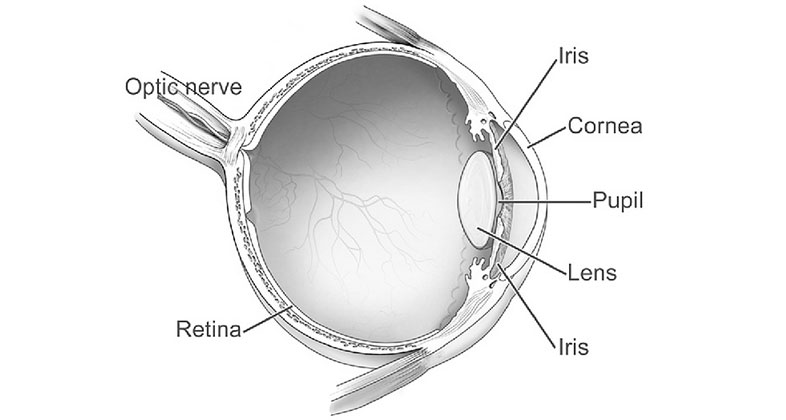Parts of the eye that assist in the process of getting an image to the Occipital lobe of the brain.
Cornea-The clear, dome shaped layer on the front of the eye that allows light to enter – “the window“. The cornea refracts light as it passes through the pupil.
Iris-The colored part of the eye. It is responsible for controlling the size of the pupil & the amount of light reaching the retina. The iris works like the shutter in a camera.
Lens-A biconvex transparent body that is behind the iris. The lens works with the cornea to refract and bend light. By changing its shape, the lens changes the focal distance of the eye.
Retina–At the back of the eye where all the light – sensitive cells are located, these cells are called photoreceptors. Photoreceptor cells take light focused by the cornea and lens and converts it into chemical and nervous signals that are transported to visual centers in the brain by way of the optic nerve. The purpose of the retina is to receive light that the lens has focused, convert the light into neutral signals and sending these signals on the brain for visual recognition.
Optic nerve-The nerve at the back of the eye that connects to the brain. The job of the optic nerve or also known as cranial nerve two is to transfer visual information from the retina to the vision center of the brain via of electrical impulses.
Sources:
www.aao.org
www.healthline.com
www.allaboutvision.com
www.visionsource.com

